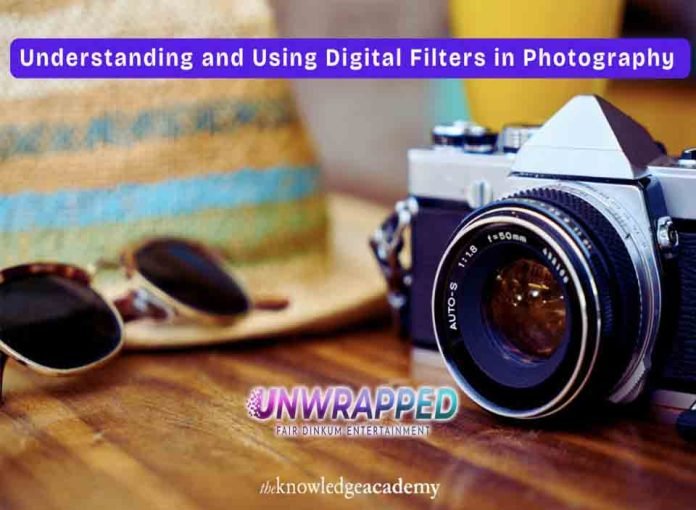Have you found yourself desperately changing filters in hopes of getting that perfect snap? If you try random filters, you might sometimes get lucky with one that enhances your pictures. But that’s not the case every time. If you feel confused about choosing the appropriate filter for your photograph, understanding the concept behind digital filters will help you choose one that best suits your photography needs. And in this regard, a Photography Course would help you become a better photographer, be it your passion or profession!
As we usher in the era of Digital Photography, understanding digital filters is crucial for capturing those professional shots. Read on to learn about the different types of digital filters and how to choose the right filter at the right place and time!
Understanding Digital Filters
Digital filters are usually made of glass or resin. They are attached in front of the lens to block specific types of light or colors from passing into the camera. Filters like Neutral Density (ND) are used to reduce the intensity of light. They come in both circular and square designs with the circular design being more widely used. They can be simply screwed onto the lens or slid into the holder in front of the lens.
With the advent of photography editing software like Adobe, editors can use them to easily apply the filter effects. But even then, the image quality gets reduced during editing. These artificial filters can’t compare to the quality of the pictures taken using an actual filter.
UV Filters
Ultraviolet (UV) filters reduce the amount of UV rays passing into the lens. They eliminate the blue tint caused by UV rays and result in high-quality pictures. Nowadays, digital cameras come with a built-in UV filter. So, now you may ask if UV filters have become redundant? Of course not! They can still be put to good use as a protector for your lens.
Photographers have differing opinions on whether the quality of the image gets reduced with a UV filter or not. If you are someone who uses your camera outdoors a lot, it’s a good idea to have the UV filter screwed onto your lens.
Polarizing Filters
Every one of us would have struggled to take pictures having shiny objects like glass and steel. We would have been fed up with changing the angles to get the best click! This is where polarizing filters come in! They block the reflected light, commonly referred to as ‘glare’. These filters work best when shot 90 degrees from the sun. The intensity of light can be adjusted as required by rotating the filter.
You can use the polarized filters on a rainy day or to take a good picture of wildlife in a rainforest. They are effective in reducing the glare on those overcast days, which allows the finer details to be seen clearly.
Neutral Density Filters
Neutral Density (ND) filters work by reducing the amount of light passing into the lens. It’s rightly called ‘sunglasses for camera’! Who wouldn’t be tempted to take a picture of a scenic waterfall or clouds? ND filters come in handy for taking pictures with objects in motion. They slow the shutter speed down and capture the moving objects effectively. A picture of a waterfall turning into a cloud of mist would mesmerise us. Remember, it’s the ND filter in action!
We humans are blessed with eyes that can vividly capture the darker and brighter parts around us. But the camera needs some assistance to balance shadows in high-contrast scenes. For capturing pictures with bright light, the graduated ND filters can be used to adjust the shadows. Variable ND filters can be used for adjusting the darkness depending on the lighting. They are commonly used for recording videos.
Conclusion
Having learned about the primary types of digital filters, you can now experiment with those filters in your next shoot! The editing software can substitute these filters to some extent. But it may not give the perfection of holding a camera and tweaking the filters to take that awesome shot. That sense of achievement can’t be compared to the edit made with your computer!
The photography courses of The Knowledge Academy may offer a hand in taking your passion for photography to the next level!










